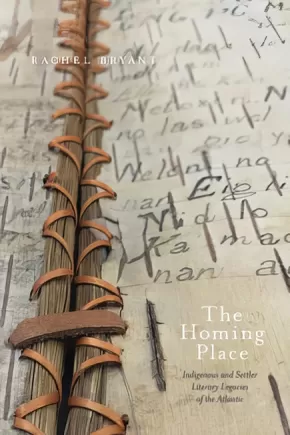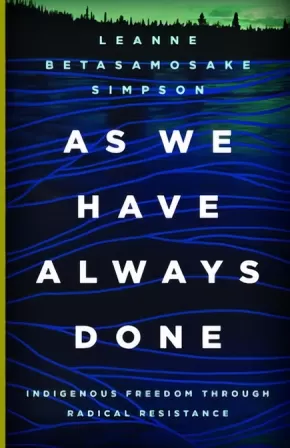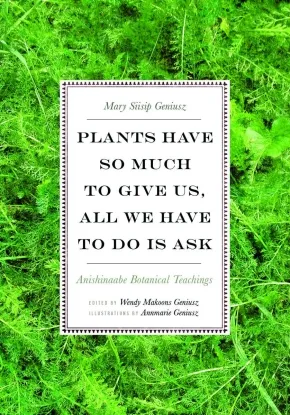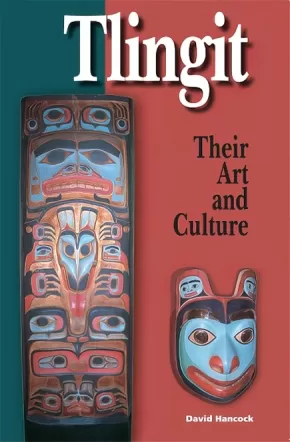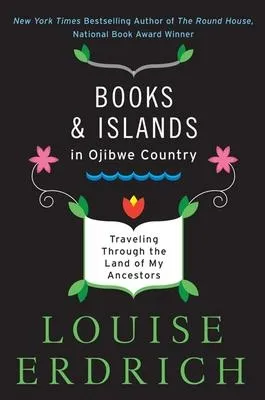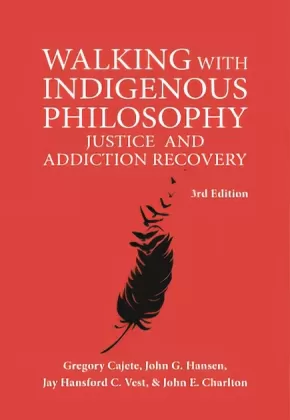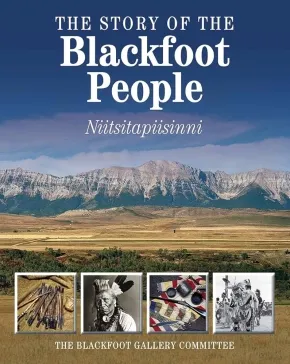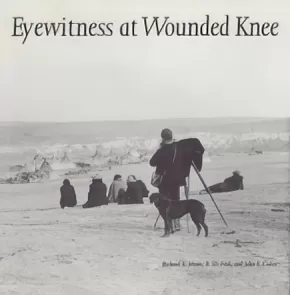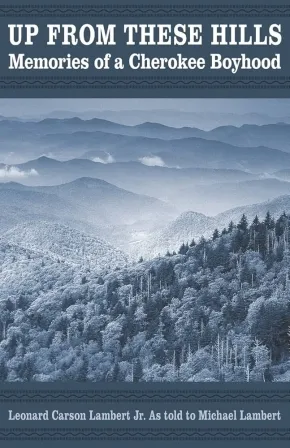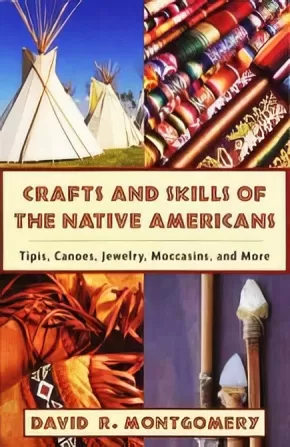Indigenous Peoples in the United States
Synopsis:
Ancient indigenous wisdom to light the way toward a contemporary path for everyone seeking a more loving and balanced world.
Drawing from ancestral knowledge, as well as her experience as an attorney and activist, Sherri Mitchell addresses some of the most crucial issues of our day—including indigenous land rights, environmental justice, and our collective human survival. Sharing the gifts she has received from the elders of her tribe, the Penobscot Nation, she asks us to look deeply into the illusions we have labeled as truth and which separate us from our higher mind and from one another. Sacred Instructions explains how our traditional stories set the framework for our belief systems and urges us to decolonize our language and our stories. It reveals how the removal of women from our stories has impacted our thinking and disrupted the natural balance within our communities.
For all those who seek to create change, this book lays out an ancient worldview and set of cultural values that provide a way of life that is balanced and humane, that can heal Mother Earth, and that will preserve our communities for future generations.
Additional Information
256 pages | 5.50" x 8.48" | Paperback
Synopsis:
Can literary criticism help transform entrenched Settler Canadian understandings of history and place? How are nationalist historiographies, insular regionalisms, established knowledge systems, state borders, and narrow definitions continuing to hinder the transfer of information across epistemological divides in the twenty-first century? What might nation-to-nation literary relations look like? Through readings of a wide range of northeastern texts – including Puritan captivity narratives, Wabanaki wampum belts, and contemporary Innu poetry – Rachel Bryant explores how colonized and Indigenous environments occupy the same given geographical coordinates even while existing in distinct epistemological worlds. Her analyses call for a vital and unprecedented process of listening to the stories that Indigenous peoples have been telling about this continent for centuries. At the same time, she performs this process herself, creating a model for listening and for incorporating those stories throughout.
This commitment to listening is analogous to homing – the sophisticated skill that turtles, insects, lobsters, birds, and countless other beings use to return to sites of familiarity. Bryant adopts the homing process as a reading strategy that continuously seeks to transcend the distortions and distractions that were intentionally built into Settler Canadian culture across centuries.
Reviews
"The Homing Place enacts and advocates for a paradigm shift in ‘literary relations’ in North America, revealing the ’invisible wall ’ in colonial perceptions that may at first seem as impermeable as the nation-state borders that divide the continent. Yet just as Indigenous people and homelands have always traversed those borders, so may our readings transcend that wall. Rachel Bryant foregrounds and leads us to acknowledge the active ways our embodied minds evade or engage Indigenous contexts and communities, producing greater awareness of the impacts of our activities as readers and writers, Native people and settlers, those who make policy, and those who are most impacted by it.”— Lisa Brooks
“Bryant’s excavation of US and Canadian exceptionalisms could not be timelier. She shows how Anglo-Atlantic writing has built a ‘system of self-protection’ that has sought to contain Indigenous geographies and indeed Indigenous agency. At the same time, she shows how First Nations have always effectively written back against this system. This book shines new light on settler colonialism and Indigenous resurgence, historic and contemporary, through sharp analyses of some influential but lesser-discussed writers. It belongs on the shelf of every scholar in Indigenous Studies, Canadian Studies, American Studies, Atlantic and Maritime Studies, Material Culture Studies, Cultural Geography, and Literary Criticism, for it creates fresh new dialogues among all of these fields and interests.”— Siobhan Senier
"If you are interested in Indigenous affairs, the history of how the eastern tribes came to be in such dire straits today, and how literature has reflected these changes – and even attempts to embrace and effect change for the better – then The Homing Place will certainly appeal to you."— The Miramichi Reader
Awards
- 2017 Writers’ Federation of New Brunswick Book Award for Non-Fiction winner
- 2018 AUP Book Jacket and Journal Show Selected Entry joint winner
Additional Information
256 pages | 6.00" x 9.00"
Synopsis:
Across North America, Indigenous acts of resistance have in recent years opposed the removal of federal protections for forests and waterways in Indigenous lands, halted the expansion of tar sands extraction and the pipeline construction at Standing Rock, and demanded justice for murdered and missing Indigenous women. In As We Have Always Done, Leanne Betasamosake Simpson locates Indigenous political resurgence as a practice rooted in uniquely Indigenous theorizing, writing, organizing, and thinking.
Indigenous resistance is a radical rejection of contemporary colonialism focused around the refusal of the dispossession of both Indigenous bodies and land. Simpson makes clear that its goal can no longer be cultural resurgence as a mechanism for inclusion in a multicultural mosaic. Instead, she calls for unapologetic, place-based Indigenous alternatives to the destructive logics of the settler colonial state, including heteropatriarchy, white supremacy, and capitalist exploitation.
Awards
- Native American and Indigenous Studies Association's Best Subsequent Book 2017
Reviews
"This is an astonishing work of Indigenous intellectualism and activism—by far the most provocative, defiant, visionary, and generous of Leanne Betasamosake Simpson's impressive corpus to date."—Daniel Heath Justice (Cherokee Nation), University of British Columbia
"I have learned more about this battered world from reading Leanne Betasamosake Simpson than from almost any writer alive today. A dazzlingly original thinker and an irresistible stylist, Simpson has gifted us with a field guide not to mere political resistance but to deep and holistic transformation. It arrives at the perfect time."—Naomi Klein, author of The Shock Doctrine and This Changes Everything
"A remarkable achievement that illuminates what is possible when we engage in the revolutionary act of indigenous self-love, As We Have Always Done asks the simple question, ‘What if no one sided with colonialism?’ The many possible answers to that question are reflected in Leanne Betasamosake Simpson’s beautifully written book in which she kindly challenges indigenous people to reclaim their lives and bodies from the settler colonial state."—Sarah Deer (Muscogee [Creek] Nation), author of The Beginning and End of Rape
"Incisive. Unmitigated. Inspiring. Simpson gives no quarter to colonialism. No quarter to a nasty Western narrative. She provides a pure, Indigenous lens—a lens that the white man tried to kill and bury. This book is a reminder that they failed in that rotten endeavor. It belongs on every Canadian bookshelf. On every American coffee table. Simpson's words are an affirmation of Indigenous resilience and resolve."—Simon Moya-Smith (Lakota and Chicano), culture editor at Indian Country Media Network
"Leanne Betasamosake Simpson confronts colonialism from the perspective of indigenous nationhood, but goes beyond arguing for changes in politics, writing in a way that enacts changes in our thinking about politics."—Indian Country Today
"While her intended audience is other Indigenous peoples, I think non-Indigenous Canadians will find it inspiring as they take up her challenge of decolonization."—Watershed Sentinel
"As We Have Always Done is an in-depth look into indigenous resistance and what is possible when that resistance embraces indigenous culture. It gives us a glimmer of hope. Hope that there is another way to live. That we can forge relationships, be with each other, and live for much more than what neo-liberal capitalism tells us life is about."—The Collective
"This book will not only offer the Indigenous community much courage, but it will also open the eyes of many non-indigenous people. We have here not just a description of a state of affairs, but also a practical guide. A very important, successful publication."—Amerindian Research
"The book is essential for anyone studying any aspect of Indigenous decolonization, politics, law, and settler colonialism, and signals a vital shift away from current neoliberal discussions and policies of indigenization and reconciliation in order to rebuild and recover indigenous nationhoods."—Transmotion
Additional Information
320 pages | 5.50" x 8.50" | Paperback
Synopsis:
Chronicles is a major work, a collection of current, pressing and inspirational stories of Indigenous communities from the Canadian subarctic to the heart of Dine Bii Kaya, Navajo Nation. Chronicles is a book literally risen from the ashes—beginning in 2008 after her home burned to the ground—and collectively is an accounting of Winona’s personal path of recovery, finding strength and resilience in the writing itself as well as in her work. Long awaited, Chronicles is a labour of love, a tribute to those who have passed on and those yet to arrive.
Reviews
“Winona LaDuke’s latest book reads like a prayer. These are holy words— inspirational stories taken straight from the heart of indigenous communities throughout the world…(Chronicles) is lyrical, instructional, and infused with wry humor when the weight of the message becomes unbearable…LaDuke provides a roadmap through tribal nations’ belief systems; offering a spiritual compass and invaluable insight into the relationship of prophesy to the realities of climate change, economic collapse, food scarcity and basic human rights.” — Huffington Post
Educator Information
Recommended for students in grades 9 - 12, as well as those at a college/university level, for courses in science, environmental science, and social justice.
Additional Information
310 pages | 6.00" x 9.00"
Synopsis:
A searing, deeply moving memoir about family, love, loss, and forgiveness from the critically acclaimed, bestselling National Book Award-winning author of The Absolutely True Diary of a Part-Time Indian.
Family relationships are never simple. But Sherman Alexie's bond with his mother Lillian was more complex than most. She plunged her family into chaos with a drinking habit, but shed her addiction when it was on the brink of costing her everything. She survived a violent past, but created an elaborate facade to hide the truth. She selflessly cared for strangers, but was often incapable of showering her children with the affection that they so desperately craved. She wanted a better life for her son, but it was only by leaving her behind that he could hope to achieve it. It's these contradictions that made Lillian Alexie a beautiful, mercurial, abusive, intelligent, complicated, and very human woman.
When she passed away, the incongruities that defined his mother shook Sherman and his remembrance of her. Grappling with the haunting ghosts of the past in the wake of loss, he responded the only way he knew how: he wrote. The result is a stunning memoir filled with raw, angry, funny, profane, tender memories of a childhood few can imagine, much less survive. An unflinching and unforgettable remembrance, You Don't Have to Say You Love Me is a powerful, deeply felt account of a complicated relationship.
Additional Information
464 pages | 5.55" x 8.25"
Synopsis:
Mary Siisip Geniusz has spent more than thirty years working with, living with, and using the Anishinaabe teachings, recipes, and botanical information she shares in Plants Have So Much to Give Us, All We Have to Do Is Ask. Geniusz gained much of the knowledge she writes about from her years as an oshkaabewis, a traditionally trained apprentice, and as friend to the late Keewaydinoquay, an Anishinaabe medicine woman from the Leelanau Peninsula in Michigan and a scholar, teacher, and practitioner in the field of native ethnobotany. Keewaydinoquay published little in her lifetime, yet Geniusz has carried on her legacy by making this body of knowledge accessible to a broader audience.
Geniusz teaches the ways she was taught—through stories. Sharing the traditional stories she learned at Keewaydinoquay’s side as well as stories from other American Indian traditions and her own experiences, Geniusz brings the plants to life with narratives that explain their uses, meaning, and history. Stories such as “Naanabozho and the Squeaky-Voice Plant” place the plants in cultural context and illustrate the belief in plants as cognizant beings. Covering a wide range of plants, from conifers to cattails to medicinal uses of yarrow, mullein, and dandelion, she explains how we can work with those beings to create food, simple medicines, and practical botanical tools.
Plants Have So Much to Give Us, All We Have to Do Is Ask makes this botanical information useful to native and nonnative healers and educators and places it in the context of the Anishinaabe culture that developed the knowledge and practice.
Additional Information
344 pages | 7.00" x 10.00" | Paperback
Synopsis:
When you visit southeast Alaska you encounter the Tlingit Indians and their very rich lands, diversified culture and wondrous art forms. You can visit from cruise ships, from the Alaska Ferry system, from private boats, from the air, or by following the highway systems though Hyder, Skagway or Haines.
The richness of the Tlingit culture flows from the incredible diversity and abundance of the surrounding seas: its fish, whales and sea life, the prolific clam beaches, and the incredible wealth from the spawning fish that feed the bears and eagles and nutrify the dense coniferous forest. The ease with which the natives could extract a good living provided much extra time to devote to developing an extraordinarily rich culture and a prolific art, as well as the warring and slave trading that set the northwest coast peoples apart from the other more food-deprived North American native peoples.
This book will give you a glimpse into the richess of their culture and art and afford you some understanding how the Tlingit evolved as part of this productive land.
Synopsis:
For more than three decades, bestselling author Louise Erdrich has enthralled readers with dazzling novels that paint an evocative portrait of Native American life. From her dazzling first novel, Love Medicine, to the National Book Award-winning The Round House, Erdrich’s lyrical skill and emotional assurance have earned her a place alongside William Faulkner and Willa Cather as an author deeply rooted in the American landscape.
In Books and Islands in Ojibwe Country, Erdrich takes us on an illuminating tour through the terrain her ancestors have inhabited for centuries: the lakes and islands of southern Ontario. Summoning to life the Ojibwe's sacred spirits and songs, their language and sorrows, she considers the many ways in which her tribe—whose name derives from the word ozhibii'ige, "to write"—have influenced her. Her journey links ancient stone paintings with a magical island where a bookish recluse built an extraordinary library, and she reveals how both have transformed her.
A blend of history, mythology, and memoir, Books and Islands in Ojibwe Country is an enchanting meditation on modern life, natural splendor, and the ancient spirituality and creativity of Erdrich's native homeland—a long, elemental tradition of storytelling that is in her blood.
Additional Information
160 pages | 5.31" x 8.00" | 15 Illustrations, 1 Map | Paperback
Synopsis:
Dr. Gregory Cajete, Dr. John G. Hansen, Dr. Jay Hansford C. Vest, and Dr. John E. Charlton have expanded the breadth, depth and scope of Walking With Indigenous Philosophy: Justice and Addiction Recovery (3rd ed.) making it a multidisciplinary, international and cross-cultural examination of a restorative justice based approach, that at its heart draws upon the wisdom inherent within Indigenous cultures, in order to question hierarchical and heavily one-sided disease based understanding to addiction recovery.
This third edition continues to advocate a model of restorative justice, saturated throughout by an Indigenous philosophy of holism and healing through inclusion and education, when working with those upon the margins, in order to appreciate and honour the whole person.
Justice is understood as a concept that must be based upon, and within, the recognition of the other. It is from within this recognition of the other that accountability, as a healing endeavour, must find its grounding. The voices of Cree elders indigenous to northern Manitoba, Indigenous Justice Workers, two American Indians (Cajete and Vest), one First Nation (Hansen), one addiction counselling professional (Charlton) and both Indigenous and non-Indigenous people in recovery are heard.
Reviews
"Walking With Indigenous Philosophy: Justice and Addiction Recovery (3rd ed) is an accurate and introspective look at Indigenous peoples and addictions. This exemplary work recognizes storytelling, restorying, and the inherent value within healing through spiritual and cultural praxis that privileges Indigenous ways of knowing. The book challenges the existing paradigm and takes you through an alternative method of being. Great for a textbook and reference for Addictions workers." - Verna Billy Minnabarriet
"For those who teach Native Cultures or want to be better informed, this book is a valuable resource. Its Indigenous perspectives on addiction recovery would be hard to find elsewhere." - Wanda Teays, PhD
Additional Information
238 pages | 6.00" x 9.00" | 3rd Edition | Paperback
Synopsis:
A “raw and honest” (Los Angeles Review of Books) memoir from the first Native American Poet Laureate of the United States.
In this transcendent memoir, grounded in tribal myth and ancestry, music and poetry, Joy Harjo details her journey to becoming a poet. Born in Oklahoma, the end place of the Trail of Tears, Harjo grew up learning to dodge an abusive stepfather by finding shelter in her imagination, a deep spiritual life, and connection with the natural world. Narrating the complexities of betrayal and love, Crazy Brave is a haunting, visionary memoir about family and the breaking apart necessary in finding a voice.
Additional Information
176 pages | 5.50" x 8.22" | Paperback
Synopsis:
For the first time in history, the Blackfoot people share their culture, beliefs and traditions with the rest of the world.
In an innovative partnership with the Glenbow Museum in Calgary, Alberta, a team of elders and spiritual leaders from the Blackfoot community agreed to share their history, traditions and artifacts in an effort to document their lives. The Story of the Blackfoot People: Nitsitapiisinni is the first piece of permanent documentation written by the leaders of the Blackfoot community about their lives both past and present.
This book chronicles all the important aspects of Blackfoot life and history. The book begins by exploring the fundamental belief systems of the Blackfoot including their traditional stories, sacred places, dances and ceremonies. Strong relationships are recognized by the Blackfoot as one of the most important keys to survival and the roles of men, women, children and elders, and their sacred connection to nature and their environment, are examined in detail. Less harmonious relationships are also candidly explored including relations between the Blackfoot people and the governments of the United States and Canada. In its moving conclusion, the Blackfoot community discusses the importance of uniting ancient traditions with modern challenges in order for their legacy to survive.
Revealing the enduring strength and fortitude of spirit of the Blackfoot people, this book will have meaning for both native and non-native readers alike.
Authenticity Note: This work is labelled as containing Authentic Indigenous Text because of the contributions from elders and other Indigenous peoples.
Synopsis:
On a wintry day in December 1890, near a creek named Wounded Knee on the Pine Ridge Reservation in South Dakota, the Seventh Cavalry of the U.S. Army opened fire on an encampment of Sioux Indians. This assault claimed more than 250 lives, including those of many Indian women and children. The tragedy at Wounded Knee has often been written about, but the existing photographs have received little attention until now.
Eyewitness at Wounded Knee brings together and assesses for the first time some 150 photographs that were made before and immediately after the massacre. Present at the scene were two itinerant photographers, George Trager and Clarence Grant Morelodge, whose work has never before been published. Accompanying commentaries focus on both the Indian and the military sides of the story. Richard E. Jensen analyzes the political and economic quagmire in which the Sioux found themselves after 1877. R. Eli Paul considers the army’s role at Wounded Knee. John E. Carter discusses the photographers and also the reporters and relic hunters who were looking to profit from the misfortune of others.
For this Bison Books edition each image has been digitally enhanced and restored, making the photographs as compelling as the event itself. Heather Cox Richardson tells the story behind the endeavor to present a meaningful account of this significant historical event.
Synopsis:
Born into a storied but impoverished family on the reservation of the Eastern Band of Cherokee Indians, Leonard Carson Lambert Jr.’s candid memoir is a remarkable story and an equally remarkable flouting of the stereotypes that so many tales of American Indian life have engendered.
Up from These Hills provides a grounded, yet poignant, description of what it was like to grow up during the 1930s and 1940s in the mountains of western North Carolina and on a sharecropper’s farm in eastern Tennessee. Lambert straightforwardly describes his independent, hardworking, and stubborn parents; his colorful extended family; his eighth-grade teacher, who recognized his potential and first planted the idea that he might attend college; as well as siblings, schoolmates, and others who shaped his life. He paints a vivid picture of life on the reservation and off, documenting work, family life, education, religion, and more. Up from These Hills also tells the true story of how this family rose from depression-era poverty, a story rarely told about Indian families. With its utterly unique voice, this vivid memoir evokes an unknown yet important part of the American experience, even as it reveals the realities behind Indian experience and rural poverty in the first half of the twentieth century.
Synopsis:
Following the removal of the gray whale from the Endangered Species list in 1994, the Makah tribe of northwest Washington State and the Nuu-chah-nulth Nation of British Columbia announced that they would revive their whale hunts. The Makah whale hunt of 1999 was met with enthusiastic support and vehement opposition. A member of the Nuu-chah-nulth First Nation, Charlotte Coté offers a valuable perspective on the issues surrounding Indigenous whaling. Her analysis includes major Aboriginal studies and contemporary Aboriginal rights issues, addressing environmentalism, animal rights activism, anti-treaty conservatism, and the public’s expectations about what it means to be “Indian.”
Synopsis:
Crafts and Skills of Native Americans is a fascinating, practical guide to the skills that have made Native Americans famous worldwide as artisans and craftsmen. Readers can replicate traditional Native American living by trying a hand at brain tanning, identifying animal tracks, or constructing a horse saddle. Readers can even make distinctive Native American beaded jewelry, a variety of moccasins, headdresses, and gourd rattles. Native American style is unique and popular, especially among young people, historians, and those with a special interest in the American West.
Additional Information
240 pages | 5.50" x 8.50"



